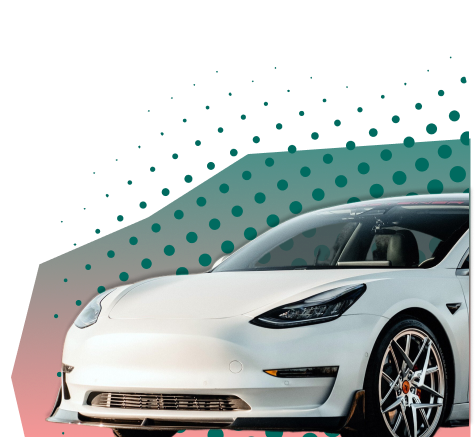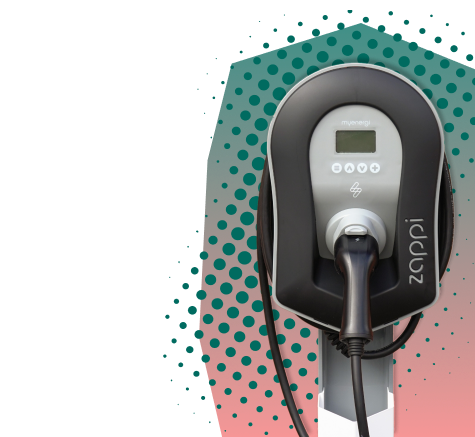Half of global passenger-vehicle sales in 2035 will be electric
As car giants and government mandates accelerate the adoption of electric vehicles, successfully transitioning to an electric world relies on one simple technology; EV batteries.
Batteries are integral to achieving goals for decarbonization, and this is especially true concerning powering future vehicles. At present, the majority of electric vehicles are powered by lithium-ion batteries, but due to a surge in demand, scientists and engineers are focusing more resources on making batteries more efficient, affordable and widely available.
With political drivers and policy changers driving initiatives to get more electric vehicles on driveways around the world, will the troubles of ‘range anxiety’ and ‘long charging times’ soon be a thing of the past?
With our fingers on the pulse of all things electric, we explore how the battery revolution will unlock the world’s transition to electric vehicles.
Batteries make up about 40% of the total cost of EVs
The high cost of batteries has previously led to reluctance among the world’s biggest carmakers to switch production away from their profitable fossil fuel models. But with prices plummeting, carmakers are converting their fleets to run on electricity, with analysts predicting lithium-ion battery packs to be the dominant battery technology for the foreseeable future. A further 50% reduction is anticipated between now and 2030 as the emergence of efficient manufacturing techniques and battery-pack designs continue to drive down prices.
According to the US Department of Energy, the price of lithium-ion battery packs fell by 87% between 2008 and 2020, with expectations of a further 50% reduction.
As a result, electric vehicles should reach price parity by the mid-2020s, with most experts suggesting achieving a cost below $100/kWh will signify EVs to be as affordable as combustion engine vehicles.
Beyond lithium-ion batteries
The social and environmental concerns around the mining of lithium and its components bear a heavy burden on the inevitable increase of demand. In particular, researchers are anxious about the most prized ingredient of EV batteries; cobalt. Two-thirds of global supply is mined in the Democratic Republic of the Congo, which has brought concerns of child labor and harm to workers’ health to light.
As such, scientists and engineers are exploring battery alternatives to further power the battery revolution and dimmish the controversy. Researchers at the University of Texas have developed a lithium-ion battery that doesn’t use cobalt for its cathode, instead, switching to a high percentage of nickel (89%). As a result of eliminating the component, they have ensured good battery life and an even distribution of ions. Similarly, SVOLT has developed a cobalt-free EV battery in China, claiming to have a higher energy density resulting in ranges of up to 800km (500 miles) for electric cars, while also lengthening the life of the battery and increasing the safety.
New battery chemistry sourced from seawater has been reported by IBM Research. Free from nickel and cobalt and claiming to outperform lithium-ion, the materials extracted from seawater have never been combined and used in a battery before. But the performance of the battery is promising, stating the battery to be both cheaper to manufacture and able to charge faster than lithium-ion.
23 million EVs sold worldwide in 2030 could lead to 5,750,000 tons of retired EV batteries by 2040
It’s one of the biggest questions asked as electric vehicles rapidly multiply; What will happen to the degraded lithium-ion batteries once the vehicles reach the end of their lives? Recycling is the optimistic solution offered by EV advocates and supporters of green technology, but will battery recycling make economic and environmental sense?
Some researchers and entrepreneurs are working hard on ways to recycle the materials inside batteries, with hopes that batteries become part of the Circular Economy. This has piqued interest from a team of scientists in the UK, has recently published a paper with iScience on the ‘financial viability of electric vehicle lithium-ion battery recycling’, warning:
“If recycling remains unprofitable, battery waste mountains could build-up, which, if uncontrolled, bear a significant environmental and safety risk, as toxic chemicals could leak into the environment and landfill fires might occur.”
At present, EV battery recycling is generally unprofitable, but researchers are optimistic it can become financially viable if a few actions are overcome. For example, manufacturers need to make batteries easier to disassemble to defuse the most labor-intensive part of the recycling process, as well as perform recycling locally and domestically to reduce transportation costs.
Recycling is becoming a favorable prospect, with California establishing the Lithium-ion Car Battery Recycling Advisory Group to propose policies for the end-of-life reuse and recycling of batteries. Their recommendations are due for release in 2022.
The EV batteries living a second life
Entrepreneurs are continuing to devise innovative ways to reuse spent electric vehicle batteries. Used car batteries are already being used to power streetlights in a Japanese town, chill beverages in convenience stores and store energy, which research suggests could support power grids for up to 12 years.
According to McKinsey, by 2030, retired EV batteries could provide 200 gigawatt-hours of energy storage globally each year—roughly 50 times the annual output of the Hoover Dam.
However, there are technical issues to address. Evaluating the health of batteries is essential to understanding whether batteries have value and are worthy of a second life. Los Angeles-based startup, ReJoule, is on a mission to streamline this process, developing a lightweight, desktop computer-sized device that can diagnose in less than five minutes, and as little as 30 seconds, whether a battery is suitable for a second life.
Another looming question is whether old batteries are a reliable way to store energy for the grid. One fear is that some batteries will only work for a few years before degrading rapidly. B2U Storage Solutions have swooped in to prove the long-term value of reusing batteries to investors. Their current project in California is looking hopeful, having retained 10 megawatt-hours of storage with its retired Nissan Lead batteries, equivalent to as much as the average US home uses in a year.
Batteries are the backbone of the electric future. Reducing the use of scarce metals and recycling and reusing spent batteries will be the key to unlocking the world’s transition to electric vehicles.
The EV battery market is expected to explode, as more and more startups emerge and scale. If your business needs to connect with the most sought after senior talent in the EV space, get in touch with our Consultants today.












